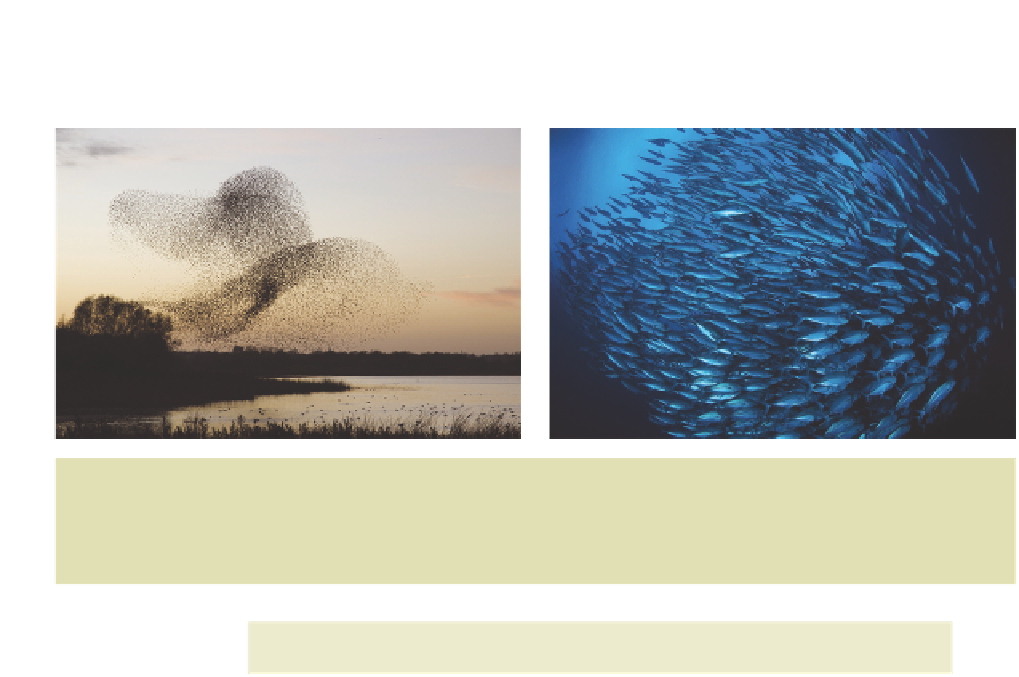Biology Reference
In-Depth Information
(a)
(b)
Fig. 6.1
Living in groups: (a) In winter, tens of thousands of starlings gather in spectacular amoeba-like flocks
at dusk, prior to their night-time roost. Photo © osf.co.uk. All rights reserved (b) When a predator approaches,
many fish form tight shoals. Why do individuals form groups? How are group movements coordinated? Photo
© iStockphoto.com/stevedeneef.
Benefits
How grouping may benefit individuals
Table 6.1
Summary
of some
anti-predator and
foraging benefits of
grouping
Anti-predator
Dilute risk of attack (swamping predators; selfish herding).
Predator confusion.
Communal defence.
Improved vigilance for predators.
Foraging
Better food finding (information centres).
Better food capture (group hunting).
How grouping can reduce predation
Predation and
food influence the
costs and benefits
of group living
Diluting the risk of attack
Dilution: theory
G.C. Williams (1966) and W.D. Hamilton (1971) were pioneers in rejecting the idea
that gregarious behaviour evolves through benefits to the population or species. Instead,
they sought individual benefits from grouping. They proposed what is perhaps the
simplest idea of all, namely individuals associate with others as a form of cover-seeking,
to reduce their personal risk of attack. If an individual is alone, clearly it is at risk of
attack if a predator encounters it. On the other hand, if it is in a group of N individuals,
it now has a 1/N chance of being the victim. So individuals may join others in the hope
that someone else gets attacked rather than them! This dilution advantage will favour




























































